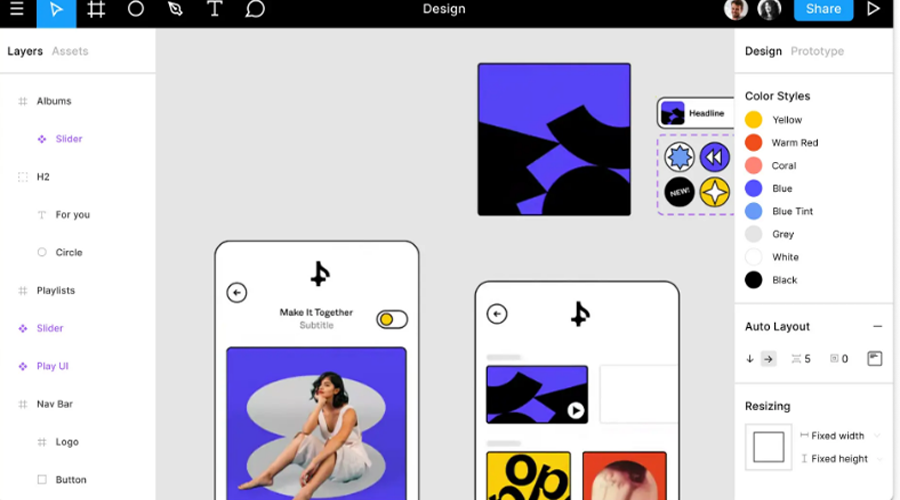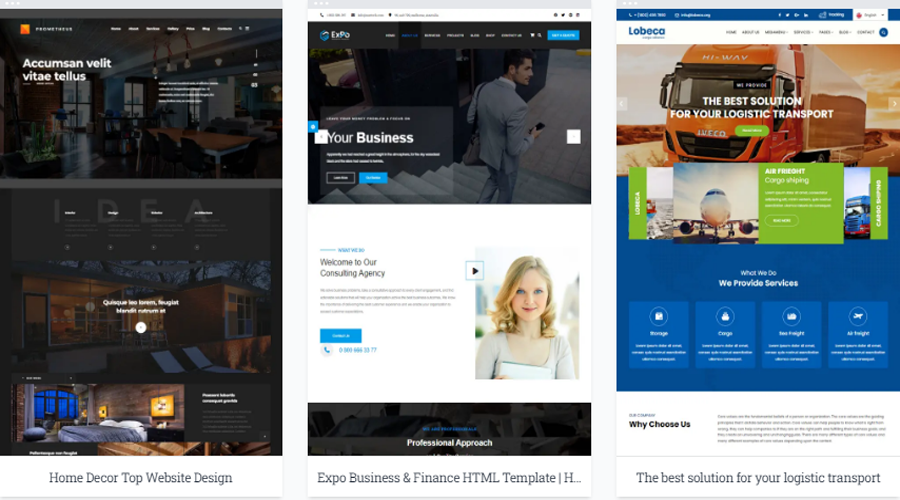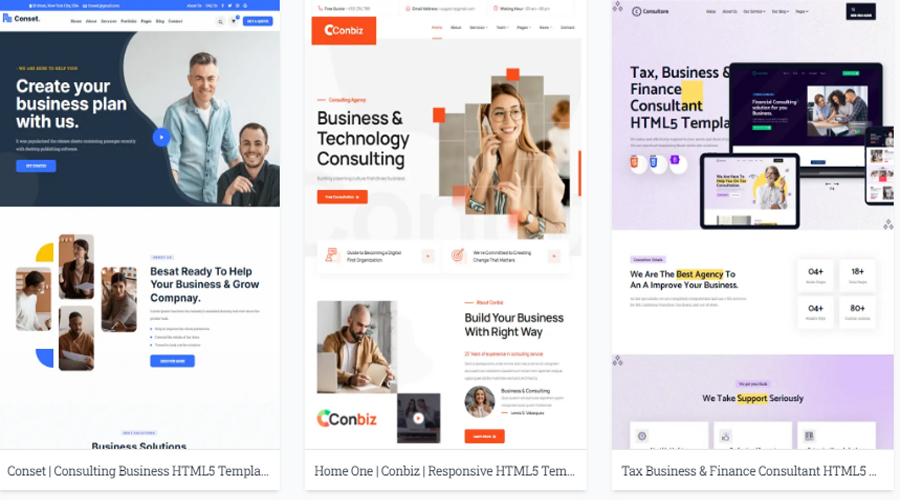Landing pages are different from homepages or other pages on a website because they focus on one single offer or action, and they eliminate any distractions or links that might take visitors away from that offer or action.
There are different types of landing pages depending on the purpose and the audience. Some of the most common types are:
Lead generation landing pages:
These are landing pages that aim to collect contact information from visitors in exchange for something valuable, such as a free trial, a coupon, a report, or a consultation. Lead generation landing pages usually have a form that asks for the visitor’s name, email address, phone number, or other details. The form is often accompanied by a headline that highlights the benefit of the offer, a subheadline that explains what the visitor will get, an image or video that showcases the offer, and some bullet points or testimonials that provide more information or social proof.

Click-through landing pages:
These are landing pages that persuade visitors to click on a button or a link that takes them to another page where they can complete a purchase, a registration, or another desired action. Click-through landing pages usually have a headline that states the value proposition of the offer, a subheadline that elaborates on the benefits or features of the offer, an image or video that demonstrates the offer, and some bullet points or testimonials that reinforce the value proposition. The button or link should be prominent and clear, and it should use action-oriented language that tells the visitor what to do next.
Squeeze pages:
These are landing pages that ask visitors to enter their email address in order to access some content or information, such as a video, an audio file, or a PDF document. Squeeze pages usually have a headline that captures the curiosity or interest of the visitor, a subheadline that reveals what the visitor will learn or gain from the content or information, an image or video that teases the content or information, and some bullet points or testimonials that build trust and credibility. The email field should be simple and easy to fill out, and it should have a button that uses words like “Get instant access”, “Watch now”, or “Download here”.
Sales pages:
These are landing pages that convince visitors to buy a product or service. Sales pages usually have a headline that communicates the main benefit of the product or service, a subheadline that summarizes the unique selling proposition of the product or service, an image or video that shows the product or service in action, and some bullet points or testimonials that highlight the features and advantages of the product or service. Sales pages also have elements that create urgency and scarcity, such as limited-time offers, countdown timers, stock indicators, guarantees, and call-to-action buttons that use words like “Buy now”, “Order today”, or “Claim your spot”.
What is the purpose of landing pages?
Landing pages have several purposes that make them essential for any online marketing campaign. Some of the main purposes are:
They dramatically improve your conversion rate:
Conversion rate is the percentage of visitors who take the desired action on your landing page. By creating landing pages that are relevant and appealing to your target audience, you can increase your conversion rate significantly. For example, according to HubSpot , companies with 10 to 15 landing pages increase leads by 55%, and companies with 40 or more landing pages increase leads by 500%. Landing pages help you convert more visitors into leads, customers, subscribers, or fans by offering them something valuable and compelling.

They tell you about your audience:
Landing pages can also help you learn more about your audience’s preferences, needs, challenges, and behaviors. By tracking and analyzing how visitors interact with your landing pages, you can gain insights into what motivates them to take action. You can also use landing page tools to conduct A/B testing , which is a method of comparing two versions of a landing page to see which one performs better. By testing different elements of your landing page, such as headlines, images, copy, forms, buttons, colors, and layouts , you can optimize your landing page for maximum conversions.
They increase brand awareness:
Landing pages can also help you increase your brand awareness and recognition among your audience. By creating landing pages that match your brand identity and voice , you can create a consistent and memorable impression on your visitors. You can also use landing pages to showcase your brand personality, values, and story, and to build trust and credibility with your visitors. By providing useful and relevant information, you can position yourself as an authority and a leader in your industry.
They are measurable:
Landing pages are also easy to measure and evaluate. By using landing page tools and analytics, you can track and monitor various metrics and indicators of your landing page performance, such as traffic, bounce rate, conversion rate, cost per lead, cost per acquisition, return on investment, and more . You can also use landing page tools to generate reports and dashboards that help you visualize and understand your landing page data. By measuring your landing page results, you can identify what works and what doesn’t, and make data-driven decisions to improve your landing page strategy.

What is the anatomy of a landing page?
Landing pages have different elements that work together to create a persuasive and effective web page. Some of the common elements are:
Headline: The headline is the first thing that visitors see when they land on your page. It should capture their attention and interest, and communicate the main benefit or value proposition of your offer. The headline should be clear, concise, and relevant to your audience and your goal.
Subheadline: The subheadline is a secondary statement that supports and expands on the headline. It should provide more details or information about your offer, such as what it is, how it works, or why it matters. The subheadline should be informative, engaging, and specific.
Image or video: The image or video is a visual element that shows your offer in action or illustrates its benefits or features. It should be relevant, high-quality, and appealing to your audience. The image or video should also match the tone and style of your landing page.
Copy: The copy is the text that explains and persuades your visitors to take action on your offer. It should address the pain points or challenges of your audience, highlight the benefits or solutions of your offer, provide social proof or testimonials from satisfied customers or users, overcome objections or doubts that your audience might have, and create urgency or scarcity to motivate them to act fast. The copy should be clear, concise, and compelling.
Form: The form is the element that collects contact information from your visitors in exchange for your offer. It should ask for the minimum amount of information necessary to achieve your goal, such as name, email address, phone number, or other details. The form should also have a clear and visible label that tells visitors what they are signing up for.
Button: The button is the element that triggers the desired action on your landing page. It should be prominent and easy to click on, and it should use action-oriented language that tells visitors what to do next. The button should also match the color and style of your landing page.
Footer: The footer is the element that contains additional information or links that might be useful or relevant to your visitors. It might include your logo, social media icons, privacy policy, terms of service, contact details, or other resources. The footer should not distract or divert visitors from the main goal of your landing page.
Maybe you are interested: Landing page best practices
I’ll ask you some questions about the landing page and answer them. Here are some possible questions and answers:
Q: What is the difference between a landing page and a homepage?
A: A landing page is a web page that is designed to capture the attention and interest of visitors who click on a link from an email, an ad, or a social media post. A homepage is the main web page of a website that provides an overview of the website’s purpose, content, and features.
Q: What are some benefits of using landing pages for online marketing?
A: Some benefits of using landing pages for online marketing are: they dramatically improve your conversion rate by offering something valuable and compelling to your visitors; they tell you about your audience by tracking and analyzing how they interact with your landing pages; they increase your brand awareness by creating a consistent and memorable impression on your visitors; and they are measurable by using landing page tools and analytics to track and monitor various metrics and indicators of your landing page performance.
Q: What are some elements of a landing page that make it persuasive and effective?
A: Some elements of a landing page that make it persuasive and effective are: headline, subheadline, image or video, copy, form, button, and footer. These elements work together to create a landing page that captures the attention and interest of visitors, communicates the main benefit or value proposition of the offer, provides more details or information about the offer, shows the offer in action or illustrates its benefits or features, addresses the pain points or challenges of the audience, highlights the benefits or solutions of the offer, provides social proof or testimonials from satisfied customers or users, overcomes objections or doubts that the audience might have, creates urgency or scarcity to motivate them to act fast, collects contact information from visitors in exchange for the offer, triggers the desired action on the landing page, and contains additional information or links that might be useful or relevant to the visitors.
Mastering the Art of Landing Pages: Effective Strategies for Conversion
